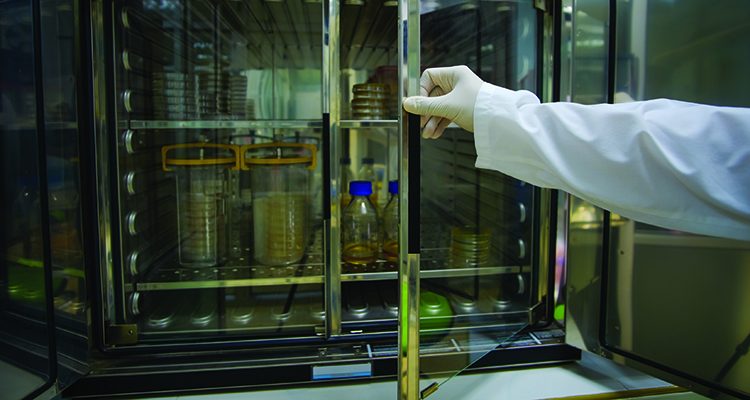The rush to rapid microbiological methods – or not
Posted: 20 April 2017 | Jeanne Moldenhauer (Excellent Pharma Consulting Inc) | No comments yet
Guardino (2005) identified the first rapid microbiological method as a rapid plate count technique. This method was developed by Professor Frost…


“Frost prepared serial dilutions of organisms in melted agar medium cooled to 45˚C, and spread 0.5ml of each dilution on sterile glass slides. He incubated these for six to eight hours, heated the slides to fix them, stained them, and counted the miniature colonies under the microscope.”
While this method was effective, like many other rapid methods, this advance did not receive wide acceptance.
There were few early adopters of rapid microbiological methods 20 years ago, including: Mary Griffin and Amy McDaniel, Patrick McCormick, Tony Cundell, the late Scott Sutton, Gary du Mouland, John Duguid, Michael Miller, Paul Newby, Gilberto Dalmassi, and Jeanne Moldenhauer. Depending upon the adopter, testing technologies of the time included:
- Water monitoring for viable microorganisms
- Microbial limits test for non-sterile products
- Preservative effectiveness testing
- Sterility testing – with and without reduced incubation periods.
In spite of the regulatory approvals for some of these techniques, there was no real rush for adoption of the rapid methods.
It is important to note that identification methods and endotoxin testing methods were readily adopted as they became available. In most cases, these are not considered in the same category as other rapid microbiological methods.
On the drug side of regulatory approvals, Gary Gressett of Alcon and Jennifer Gray of Novartis both got regulatory approval for rapid sterility tests using different technologies. Both published about their validation and approval process. Ms. Gray also published several articles to provide techniques for evaluating media to use, how to manufacture stressed organisms, and how to be sure that the rapid method allowed one to identify the microorganisms post testing. In effect, between these two authors one had a roadmap for the implementation, submission and validation methods for a rapid sterility test.
Sterility testing had been seen as the golden cow of rapid methods, since a shortened incubation period resulted in a cost avoidance that could be calculated to justify the cost of system purchase. Sadly, this did not trigger a large-scale adoption of rapid methods. Many were still scared of the accuracy of these methods, for some technologies there were concerns about how to perform investigations with these methods since they counted organisms that could not be cultured, and the like.
Air monitoring


One of the first vendors for this type of technology worked heavily with the US Food and Drug Administration (FDA). During this same period, there was a push from the FDA to go to ‘process analytical technology’.
FDA defined process analytical technology (PAT) in 2016 as:
“A system for designing, analysing, and controlling manufacturing through timely measurements (ie, during processing) of critical quality and performance attributes of raw and in-process materials and processes with the goal of ensuring final product quality.”
It also clarified that the term analytical in PAT is broadly defined to include chemical, physical, microbiological, mathematical, and risk analysis conducted in an integrated manner.
FDA stated that one of the goals for PAT is, “to design and develop processes that can consistently ensure a predefined quality at the end of the manufacturing process”. This agrees with the concept of Quality by Design. Another benefit of this concept is to reduce risks to quality and regulatory with improving efficiency. An FDA inspector (Dr Uratani) made a podium speech at the Parenteral Drug Association (PDA) Global Microbiology Meeting saying that this type of air monitoring was the type of advance that fitted well into the PAT Initiative.
The various vendors had consortium groups of pharmaceutical manufacturers that identified the needs for their company, and provided advice on the validation and use of these systems. Over 20 companies were represented at these consortium groups.
Many of the consortium members purchased systems for use at their companies. These companies found a variety of processes for which these systems could be used. Examples include: monitoring of the air quality of isolators; monitoring air quality in various classifications of rooms; providing aid in conducting investigation (ie, got quick results to find the source of contamination), and in training of cleanroom personnel.
Some growth-based technologies for air monitoring also were introduced. They have also reduced time to results, but do not meet the criteria of real-time results. The “benefits” perceived by users for these systems is the ability to have an organism to culture if it is counted. At first, it appeared that rapid air monitoring would be the big push for RMMs, but few of these companies implemented these systems for routine monitoring.
Water monitoring
In the last few years, several companies have come out with RMMs for in-line detection of contamination in water systems. Several companies use some variation of Mie scattering and riboflavin utilisation to determine the number of viable microorganisms present in the water in real time. These technologies are based upon the same principles as the similar air monitoring devices.
Additionally, a technology using Raman spectroscopy was also introduced. This is different because, in addition to detection and enumeration, this system also identifies the microorganisms present. This system takes about an hour from sample collection to identification.
In this same general time period, the PDA had a taskforce develop Technical Report No. 69 on Bioburden and Biofilm Management in Pharmaceutical Manufacturing Operations.3 This taskforce included representatives from industry, vendors, as well as regulatory personnel. The use of rapid methods for water monitoring was discussed in this document. Many of the members of this taskforce, and companies who read the technical report, have purchased equipment to perform this in-line microbial monitoring. Current systems typically have in-line total organic carbon detectors and conductivity meters. This leaves only the microbiological testing that is not performed in real time. As mentioned above, there are technologies available to perform this testing.
While on-line endotoxin testing is not currently used, rapid handheld systems have been developed that can provide results in about 15 minutes. Together, this would allow for release of pharmaceutical water systems in about 15 minutes.
It should be noted that there are also table-top models of RMM equipment that can be used for rapid microbiological testing of water. Some growth-based systems can also be used for water testing.
Pharmaceutical waters are critical to operations. For most drug products, water is a main ingredient in the formulation. Additionally, water is used at the site for cleaning of equipment, walls and surfaces. It may also be used to formulate appropriate disinfectant formulations. Failure to have the proper quality of water can cause many problems in the facility. Waiting for results of viable microbiological monitoring is a multi-day wait before the water system can be released. In many cases, when contamination was found it resulted in many product batches being placed on hold while resolving the contamination results.
What has been amazing is the response from industry! Numerous companies have purchased multiple in-line units for their facility water systems, and some of them have already validated the systems. They are currently preparing regulatory submissions to have these systems implemented. After three decades of rapid methods, companies are really starting to seriously implement these systems on a global basis. For early adopters, and many vendors, this is what we have been waiting for!


Conclusion
The history of RMMs in the pharmaceutical industry has moved at a snail’s pace, even after the regulatory approval of rapid sterility testing, which was the most important rapid method to consider. While many have talked about the conservative nature of the pharmaceutical industry, it does not seem likely that it would take three decades for there to be an open “rush” to adopt rapid methods. Don’t get left behind!
Biography


References
- Guardino RF. 2005. Early History of Microbiology and Microbiological Methods. In Encyclopedia of Rapid Microbiological Methods, Volume 1. 1-28. Miller MJ. PDA/DHI Publishers. Bethesda, MD.
- Guidance for Industry PAT – A Framework for Innovative Pharmaceutical Development, Manufacturing, and Quality Assurance. FDA. 2016. fda.gov/aboutfda/centersoffices/officeofmedicalproductsandtobacco/cder/ucm088828.htm
- Technical Report No. 69. Bioburden and Biofilm Management in Pharmaceutical Manufacturing Operations. Parenteral Drug Association. 2015. Bethesda, MD.
Issue
Related topics
Analytical techniques, Biopharmaceuticals, Microbiology, Regulation & Legislation









